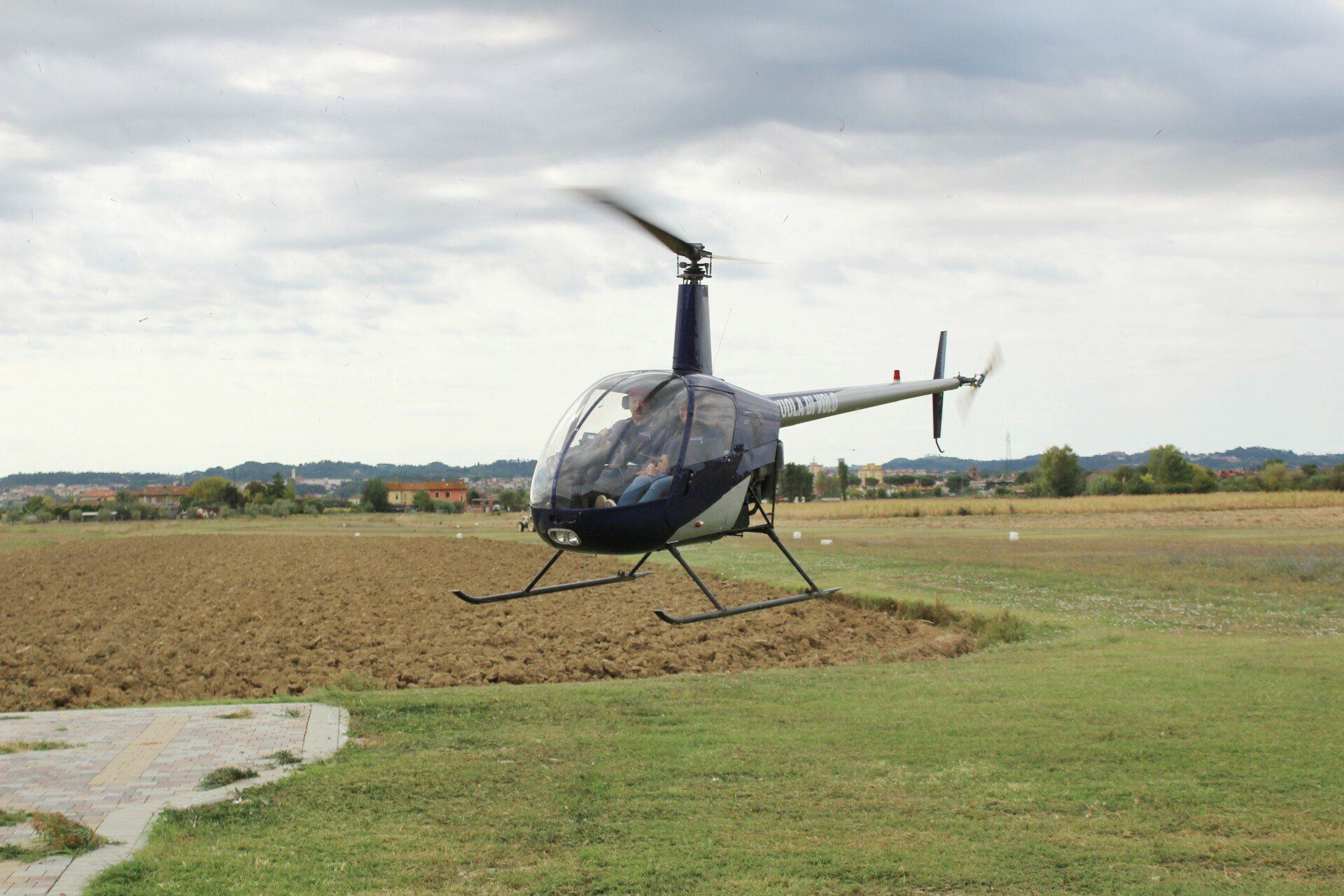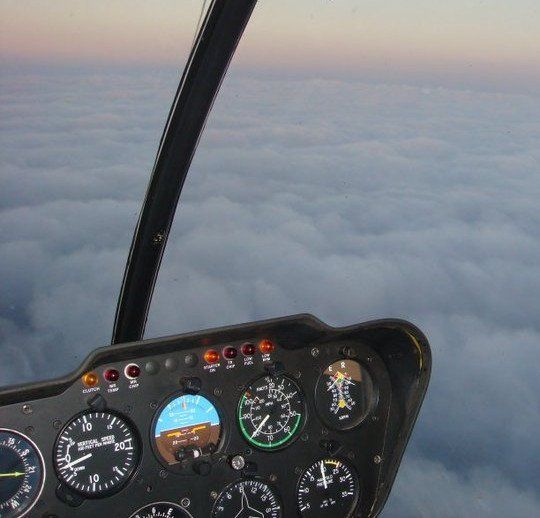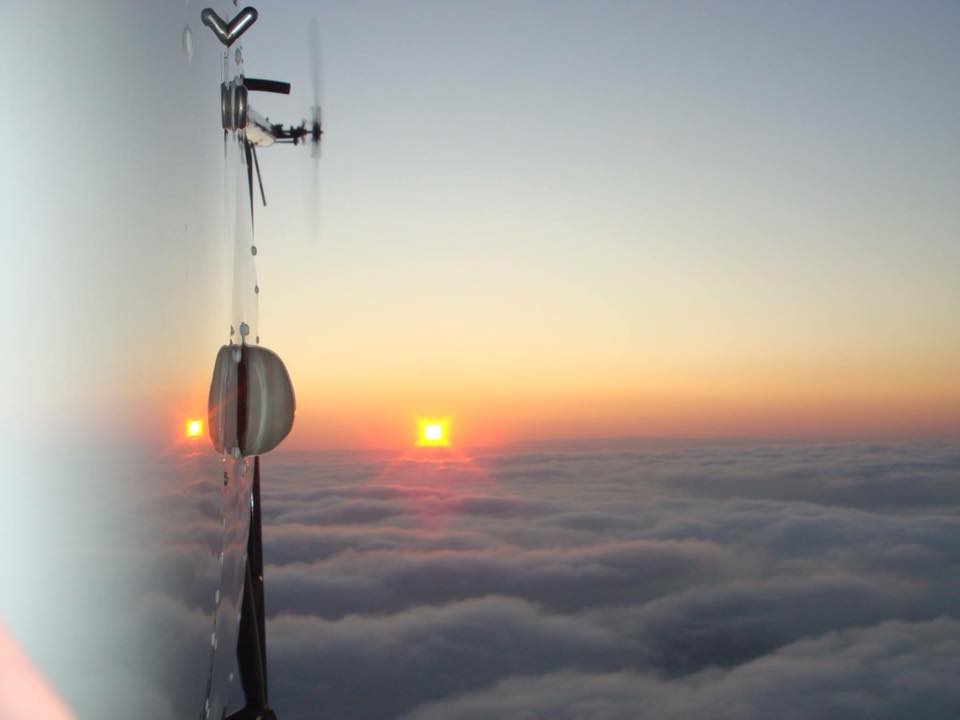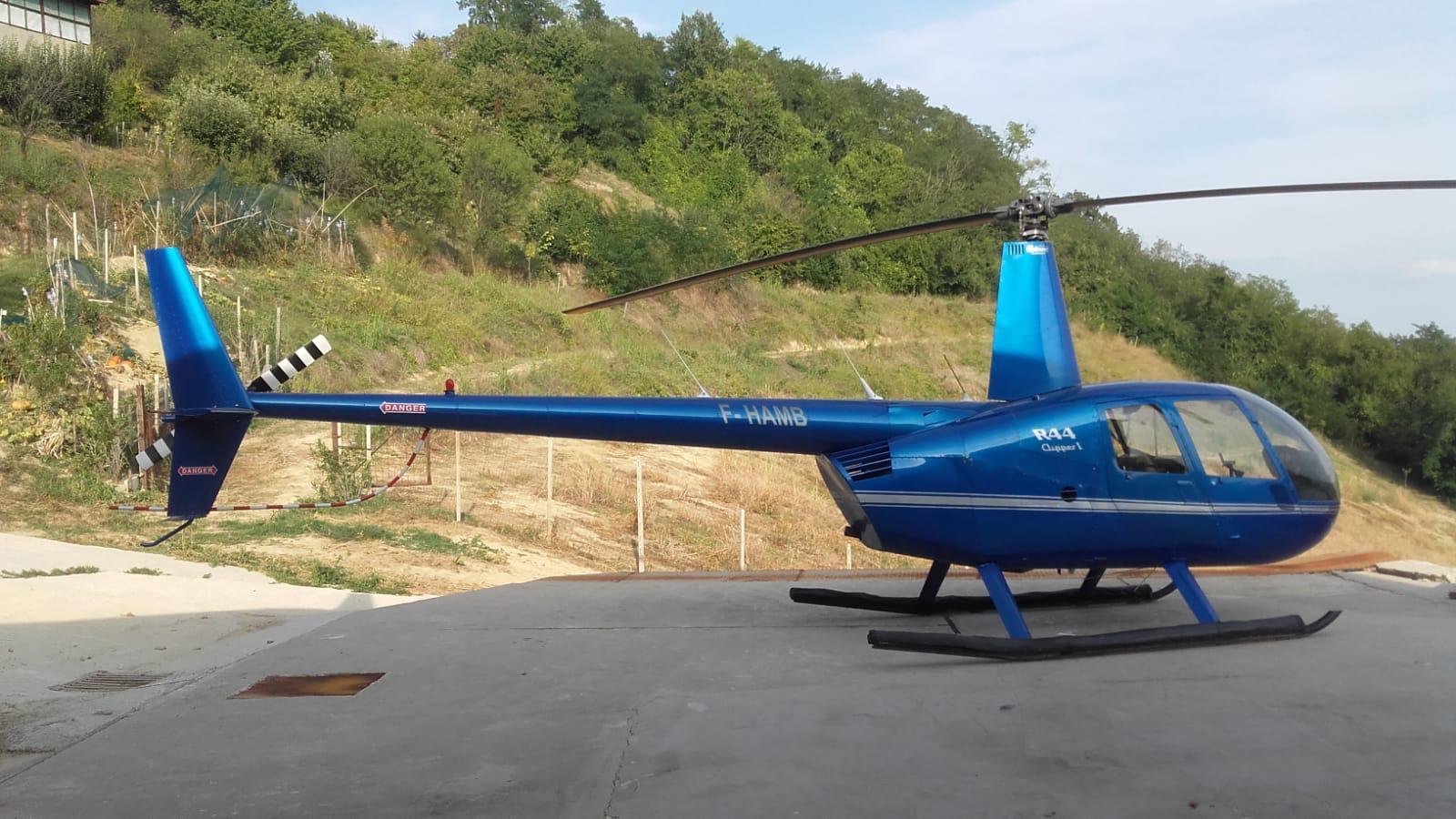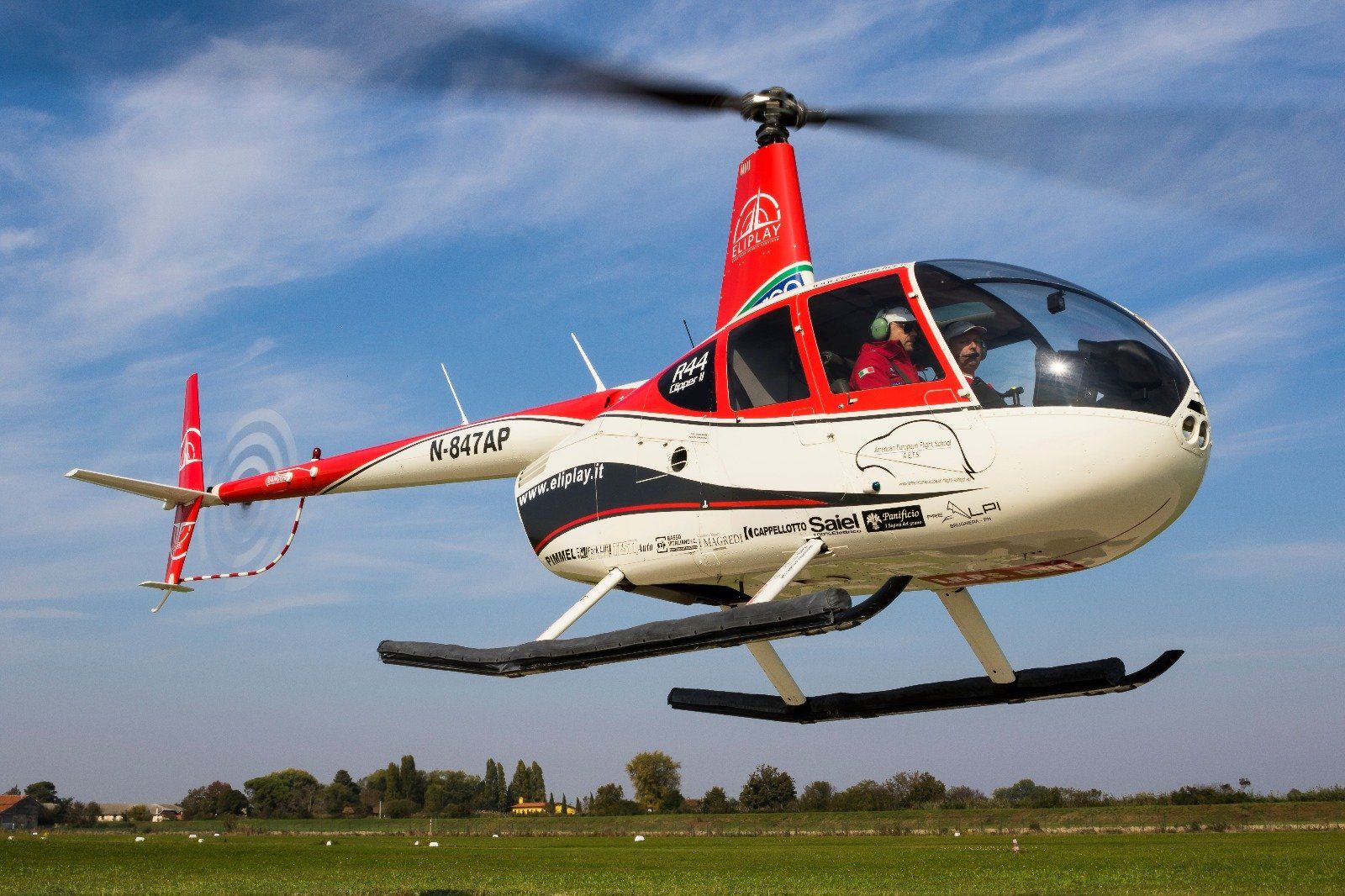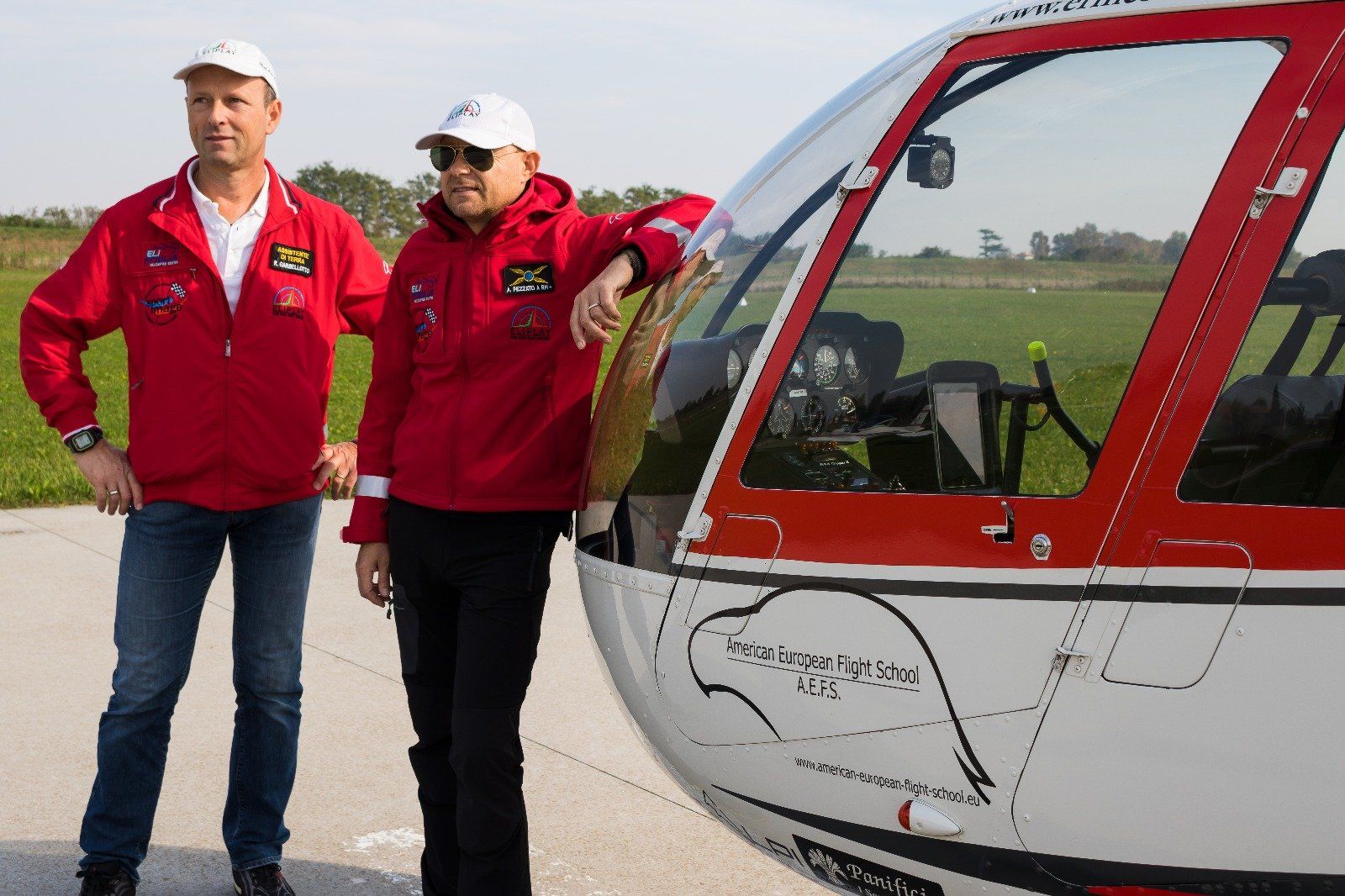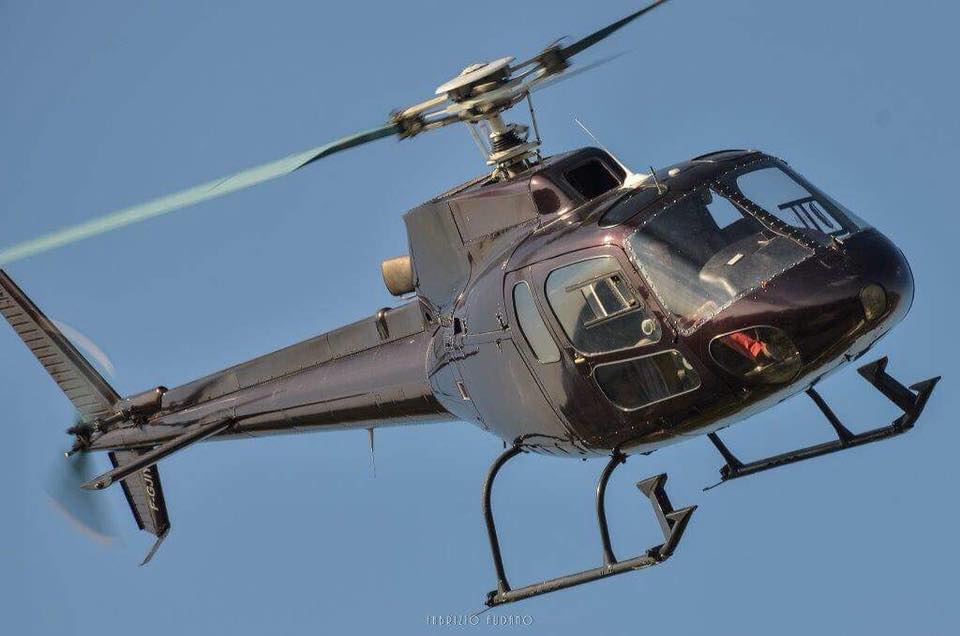.
.
FOR CAREER OR FUN , JUST DO IT
AMERICAN EUROPEAN FLIGHT SCHOOL , COMBINED FLIGHT TRAININING EASA/FAA/VDS

FLIGHT TRAINING
There’s a world to discover with our great features.
American European Flight School offers advanced specialty courses for the following certificates:
PPL, CPL, IR, ATPL, IPC, BFR (FAA) Airplane and Helicopter
VDS, PPL, CPL, IR, ATPL (EASA) Airplane and Helicopter
PPL, CPL, IR, ATPL, IPC, BFR (FAA) Airplane and Helicopter
VDS, PPL, CPL, IR, ATPL (EASA) Airplane and Helicopter
TIMEBUILDING,
Two FAA Pilots can entry the same Flight hour in the logbook, the costs will be shared between the FAA pilots.
Example : R44 could costs 350 euro/H
AS350 , A109 etc will be very cheap for Turbine time bulding as well
ask to us : info@aefs.it
Aircrafts & Weight Restrictions:Manufacturer weight limitations that can not be exceeded!
F L E E T :
Robinson R22
Maximum Passenger Weight (per seat)
= 240 lbs.
Average Pilot & Passenger Total Weight = 400 lbs.
Max Gross Weight
= 1370 lbs.
2 Seats – Pilot & Passenger.
Max Range: 240 nm(386 km).
Up to 3000 feet,
density altitude: 102 KIAS
Robinson R44 Raven I
Maximum Passenger Weight (per seat) = 300 lbs
Average Pilot & 3 Passengers Total Weight = 1170 lbs
Average Pilot & 3 Passengers Total Weight = 1170 lbs
Max Gross Weight
= 2500 lbs
4 Seats – Pilot & 3 Passengers
Max Range = 300 nm(550 km)
Max Operating Altitude=14,000 ft
Cruise Speed at Max Gross Weight = up to 109 kts
(202 km/h)
Robinson R44 Clipper II
Maximum Passenger Weight (per seat) = 350 lbs
Passengers Total weight = 1400 lbs
Max Gross Weight=2500lbs
4 Seats – Pilot & 3 Passengers
Max Range=300 nm (550km)
Max Operating Altitude=14,000 ft
Cruise Speed at Max Gross Weight=up to 106 kts
(196 km/h)
PPL (A+H) FAAPRIVATE PILOT CERTIFICATE
Requirements
- Be at least 17 years of age
- Be able to read, speak, and understand the
English language
- Obtain at least a current third-class medical
certificate
- Have logged at least 40 hours and the
required training for the PPL rating per FAA
regulations.
- Pass a knowledge test as well as the practical
test
FAR/AIM : §61.109 Aeronautical experience.
https://www.ecfr.gov/cgi-bin/text-idx?SID=e42d325f2a0022c09abe4fbb3f9a7290&mc=true&node=sp14.2.61.e&rgn=div6#se14.2.61_1109
- Be at least 17 years of age
- Be able to read, speak, and understand the
- Obtain at least a current third-class medical
- Have logged at least 40 hours and the
- Pass a knowledge test as well as the practical
https://www.ecfr.gov/cgi-bin/text-idx?SID=e42d325f2a0022c09abe4fbb3f9a7290&mc=true&node=sp14.2.61.e&rgn=div6#se14.2.61_1109
FAA Private Pilot Aeronautical Experience Requirements
Must log a minimum of 40 hours flight time in a helicopter, which includes the following:
20 hours of dual flight instruction, including:
3 hours of dual cross-country flight
3 hours of dual night flight training, including:
A cross-country flight of over 50 nautical mile total distance
10 takeoffs and landings at night to a full stop (with each landing involving a flight in the traffic pattern) at an airport
10 hours of solo flight time, including:
3 hours of cross-country time, including:
One solo cross-country 3 hours of cross-country flight of at least 75 nautical miles total distance, with landings at a minimum of three points, and one segment of the flight being a straight-line distance of at least 25 nautical miles between the takeoff and landing locations, and
Three takeoffs and three landings to a full stop (with each landing involving a flight in the traffic pattern) at an airport with an operating control tower
3 hours in a helicopter in preparation for the FAA practical test within the 60-day period preceding the date of the test
The bottom line of the FAA regulations is that they require a minimum of 40 hours of flight training, as well as a passing grade of 70% or better on a written examination, successfully passing an FAA oral examination and a flight test. Due to the volume of knowledge and the level of skill required, very few students are ready to take the test at 40 hours of flight training. A more realistic estimate is 50 to 70 hours of flight training and 20 to 40 hours of ground training.
Must log a minimum of 40 hours flight time in a helicopter, which includes the following:
20 hours of dual flight instruction, including:
3 hours of dual cross-country flight
3 hours of dual night flight training, including:
A cross-country flight of over 50 nautical mile total distance
10 takeoffs and landings at night to a full stop (with each landing involving a flight in the traffic pattern) at an airport
10 hours of solo flight time, including:
3 hours of cross-country time, including:
One solo cross-country 3 hours of cross-country flight of at least 75 nautical miles total distance, with landings at a minimum of three points, and one segment of the flight being a straight-line distance of at least 25 nautical miles between the takeoff and landing locations, and
Three takeoffs and three landings to a full stop (with each landing involving a flight in the traffic pattern) at an airport with an operating control tower
3 hours in a helicopter in preparation for the FAA practical test within the 60-day period preceding the date of the test
The bottom line of the FAA regulations is that they require a minimum of 40 hours of flight training, as well as a passing grade of 70% or better on a written examination, successfully passing an FAA oral examination and a flight test. Due to the volume of knowledge and the level of skill required, very few students are ready to take the test at 40 hours of flight training. A more realistic estimate is 50 to 70 hours of flight training and 20 to 40 hours of ground training.
Private Pilot Add-on Helicopter Rating
30 hours minimum flight time in a helicopter, which includes the following:
20 hours of dual flight instruction, including:
3 hours of dual cross-country flight
3 hours of dual night flight training, including:
A cross-country flight of over 50 nautical mile total distance
10 takeoffs and landings at night to a full stop (with each landing involving a flight in the traffic pattern) at an airport
10 hours of solo flight time, including:
3 hours of cross-country time, including:
One solo cross-country 3 hours of cross-country flight of at least 75 nautical miles total distance, with landings at a minimum of three points, and one segment of the flight being a straight-line distance of at least 25 nautical miles between the takeoff and landing locations, and
Three takeoffs and three landings to a full stop (with each landing involving a flight in the traffic pattern) at an airport with an operating control tower
3 hours in a helicopter in preparation for the FAA practical test within the 60-day period preceding the date of the test
The Private Pilot Add-on Helicopter Rating can realistically be obtained at 30 to 40 hours of flight training and 15 to 20 hours of ground training. This of course depends on your overall aviation experience, your ability and skill level and the effort you put into the program. You are not required to take the FAA written examination.
30 hours minimum flight time in a helicopter, which includes the following:
20 hours of dual flight instruction, including:
3 hours of dual cross-country flight
3 hours of dual night flight training, including:
A cross-country flight of over 50 nautical mile total distance
10 takeoffs and landings at night to a full stop (with each landing involving a flight in the traffic pattern) at an airport
10 hours of solo flight time, including:
3 hours of cross-country time, including:
One solo cross-country 3 hours of cross-country flight of at least 75 nautical miles total distance, with landings at a minimum of three points, and one segment of the flight being a straight-line distance of at least 25 nautical miles between the takeoff and landing locations, and
Three takeoffs and three landings to a full stop (with each landing involving a flight in the traffic pattern) at an airport with an operating control tower
3 hours in a helicopter in preparation for the FAA practical test within the 60-day period preceding the date of the test
The Private Pilot Add-on Helicopter Rating can realistically be obtained at 30 to 40 hours of flight training and 15 to 20 hours of ground training. This of course depends on your overall aviation experience, your ability and skill level and the effort you put into the program. You are not required to take the FAA written examination.
CPL (A+H) FAACOMMERCIAL PILOT CERTIFICATE
Requirements
- Be at least 18 years of age
- Hold a Private pilot certificate
- Be able to read, speak, and understand the
English language
- Obtain at least a current third-class medical
certificate
- Have logged at least 150 (250 A ) hours and
the required training for the CPL rating per
FAA regulations
- Pass a knowledge test as well as the practical
test
FAR/AIM : §61.129 Aeronautical experience.
https://www.ecfr.gov/cgi-bin/text-idx?SID=e42d325f2a0022c09abe4fbb3f9a7290&mc=true&node=se14.2.61_1129&rgn=div8
- Be at least 18 years of age
- Hold a Private pilot certificate
- Be able to read, speak, and understand the
- Obtain at least a current third-class medical
- Have logged at least 150 (250 A ) hours and
- Pass a knowledge test as well as the practical
https://www.ecfr.gov/cgi-bin/text-idx?SID=e42d325f2a0022c09abe4fbb3f9a7290&mc=true&node=se14.2.61_1129&rgn=div8
FAA Commercial Pilot Aeronautical Experience Requirements
Must log at least 150 hours flight time as a pilot that consists of at least:
100 hours in powered aircraft, of which 50 hours must be in helicopters
100 hours of pilot-in-command flight time which includes:
35 hours PIC in helicopters
10 hours of cross-country flight in helicopters
20 hours of dual training on the areas of operation, which includes:
10 hours of instrument training in an aircraft
One cross-country flight of at least 2 hours in a helicopter in day VFR conditions, consisting of a total straight line distance of more than 50 nautical miles from the original point of departure
One cross-country flight of at least 2 hours in a helicopter in night VFR conditions, consisting of a total straight line distance of more than 50 nautical miles from the original point of departure
10 hours of solo flight time in a helicopter, which includes:
One cross-country flight with landings at a minimum of three points, with one segment consisting of a straight-line distance of at least 50 nautical miles from the original point of departure
5 hours in night VFR condition with 10 takeoffs and landings (with each landing involving a flight in the traffic pattern)
3 hours in a helicopter in preparation for the FAA practical test within the 60-day period preceding the date of the test
The minimum number of flight hours required for the Commercial Certificate is 150 and it is reasonable to expect that you will attain the required standard to pass the check ride with that number of hours.
Commercial Pilot Add-on Helicopter Rating
Must log at least 150 hours flight time as a pilot that consists of at least:
100 hours in powered aircraft, of which 50 hours must be in helicopters
100 hours of pilot-in-command flight time which includes:
35 hours PIC in helicopters
10 hours of cross-country flight in helicopters
20 hours of dual training on the areas of operation, which includes:
10 hours of instrument training in an aircraft
One cross-country flight of at least 2 hours in a helicopter in day VFR conditions, consisting of a total straight line distance of more than 50 nautical miles from the original point of departure
One cross-country flight of at least 2 hours in a helicopter in night VFR conditions, consisting of a total straight line distance of more than 50 nautical miles from the original point of departure
10 hours of solo flight time in a helicopter, which includes:
One cross-country flight with landings at a minimum of three points, with one segment consisting of a straight-line distance of at least 50 nautical miles from the original point of departure
5 hours in night VFR condition with 10 takeoffs and landings (with each landing involving a flight in the traffic pattern)
3 hours in a helicopter in preparation for the FAA practical test within the 60-day period preceding the date of the test
The minimum number of flight hours required for the Commercial Certificate is 150 of which 50 hours must be in helicopters it is reasonable to expect that you will attain the required standard to pass the check ride with that number of hours.
You are not required to take the FAA written examination.
Must log at least 150 hours flight time as a pilot that consists of at least:
100 hours in powered aircraft, of which 50 hours must be in helicopters
100 hours of pilot-in-command flight time which includes:
35 hours PIC in helicopters
10 hours of cross-country flight in helicopters
20 hours of dual training on the areas of operation, which includes:
10 hours of instrument training in an aircraft
One cross-country flight of at least 2 hours in a helicopter in day VFR conditions, consisting of a total straight line distance of more than 50 nautical miles from the original point of departure
One cross-country flight of at least 2 hours in a helicopter in night VFR conditions, consisting of a total straight line distance of more than 50 nautical miles from the original point of departure
10 hours of solo flight time in a helicopter, which includes:
One cross-country flight with landings at a minimum of three points, with one segment consisting of a straight-line distance of at least 50 nautical miles from the original point of departure
5 hours in night VFR condition with 10 takeoffs and landings (with each landing involving a flight in the traffic pattern)
3 hours in a helicopter in preparation for the FAA practical test within the 60-day period preceding the date of the test
The minimum number of flight hours required for the Commercial Certificate is 150 of which 50 hours must be in helicopters it is reasonable to expect that you will attain the required standard to pass the check ride with that number of hours.
You are not required to take the FAA written examination.
Flight Training
The Commercial Pilot flight training course is divided into three phases:
PHASE IThis phase will introduce you to the Commercial Pilot flight Standards you will be required to obtain. You will learn the skills needed to become a successful Commercial Pilot and the different techniques used while flying commercially. Flight training will initially concentrate on dual day and night cross country flying as well as local night flying to prepare the student for their solo experience.
The Commercial Pilot flight training course is divided into three phases:
PHASE I
PHASE II (Solo experience)
During this phase your instructor will concentrate on two areas as you build-up your PIC time to the required 100 hours. The first of these is congested-area flying. Together you will make several flights through the busy airspace surrounding the Airport. This type of flying puts considerable demands on the pilot, both in terms of flying skills and aeronautical knowledge.
The second area on which your instructor will concentrate is off-airport operations. You will learn the techniques of pinnacle approaches as used when landing on a mountain top or on a roof top helipad. You will also practice confined area landings. These include forest clearings, narrow streets, and other situations where the flight-path is severely restricted by obstacles.
PHASE III (Pre-check ride)
The last few hours of training will be spent with your instructor, preparing for the specific requirements of the flight test.
TSA RequirementsTransportation Security Administration (TSA)
Flight Training Requirements
Privileges and Limitations
If you are planning to train at American European Flight School you will need to contact us before submitting a request to the TSA.
After the events of September 11th, the United States has implemented more stringent guidelines for anyone entering the country for Flight Training. The Transportation Security Administration (TSA) has developed a website, www.flightschoolcandidates.gov which all foreign nationals must go through to obtain permission for training.
Privileges and Limitations
If you are planning to train at American European Flight School you will need to contact us before submitting a request to the TSA.
After the events of September 11th, the United States has implemented more stringent guidelines for anyone entering the country for Flight Training. The Transportation Security Administration (TSA) has developed a website, www.flightschoolcandidates.gov which all foreign nationals must go through to obtain permission for training.
JUST DO IT !
A DAY AS A HELICOPTER PILOT
IR (A+H) FAAINSTRUMENT PILOT CERTIFICATE
Requirements
- Be at least 18 years of age
- Hold a Private pilot certificate
- Be able to read, speak, and understand the
English language
- Obtain at least a current third-class medical
certificate
- Have the required training for the IR
rating per FAA regulations
- Pass a knowledge test as well as the practical
test
FAR/AIM : §61.159 Aeronautical experience.
https://www.ecfr.gov/cgi-bin/retrieveECFR?gp=&SID=781f334497f317fe2426a3e475ffa310&mc=true&n=pt14.2.61&r=PART&ty=HTML#se14.2.61_165
- Be at least 18 years of age
- Hold a Private pilot certificate
- Be able to read, speak, and understand the
English language
- Obtain at least a current third-class medical
certificate
- Have the required training for the IR
rating per FAA regulations
- Pass a knowledge test as well as the practical
test
FAR/AIM : §61.159 Aeronautical experience.
https://www.ecfr.gov/cgi-bin/retrieveECFR?gp=&SID=781f334497f317fe2426a3e475ffa310&mc=true&n=pt14.2.61&r=PART&ty=HTML#se14.2.61_165
Ground School
The detail and depth of knowledge will be attained through one-on-one tuition with your instructor, combined with a program of home study. You will receive a minimum of 20 hours of ground instruction in preparation for your Commercial exams. You can figure on spending 1 hour of ground for every 2 hours of flight training. If you already hold a Commercial Pilot (Airplane) Certificate, you will not have to take another written test for helicopters.
We require that all of our student’s successfully pass their written examination prior to starting their solo experience flight time. It is our goal to insure that all of our students pass their written examination with a passing grade of 85% or better. We have developed a training strategy that allows our students to achieve this level of success, time and time again...
The detail and depth of knowledge will be attained through one-on-one tuition with your instructor, combined with a program of home study. You will receive a minimum of 20 hours of ground instruction in preparation for your Commercial exams. You can figure on spending 1 hour of ground for every 2 hours of flight training. If you already hold a Commercial Pilot (Airplane) Certificate, you will not have to take another written test for helicopters.
We require that all of our student’s successfully pass their written examination prior to starting their solo experience flight time. It is our goal to insure that all of our students pass their written examination with a passing grade of 85% or better. We have developed a training strategy that allows our students to achieve this level of success, time and time again...
TURBINE TRANSITION
This course is designed to provide a
helicopter-rated pilot with the knowledge
and skills required to competently operate
a turbine-powered helicopter.
Experience in turbine helicopters will enhance
a pilot’s hiring potential.
The Turbine Transition Program is the excellent opportunity for a rated pilot to transition from
a piston to a turbine helicopter.The course includes the study of the systems, the engine and the flight manual with its procedures, normal and emergency maneuvers both on ground and in flight.
The Certificate achieved at the completion
of the course is a valid document for insurance requirement purposes, personal curriculum
and it is a great proof of achievement.
Medical Requirements
Prior to your beginning your solo flight experience you must obtain a Class II Medical Certificate. It is our belief that you should obtain your Medical Certificate as soon as you decide to train for your Commercial Pilot Rating. In the unlikely event that you are not able to pass the medical exam, you will not have spent your time and money on training. Your instructor will assist you in finding an appropriately-certified physician to administer the necessary examination...
Prior to your beginning your solo flight experience you must obtain a Class II Medical Certificate. It is our belief that you should obtain your Medical Certificate as soon as you decide to train for your Commercial Pilot Rating. In the unlikely event that you are not able to pass the medical exam, you will not have spent your time and money on training. Your instructor will assist you in finding an appropriately-certified physician to administer the necessary examination...
UN GIORNO DA PILOTA
"Un Giorno da Pilota" include 1 ora di istruzione Ground. Il tuo istruttore spiegherà come funzionano i controlli dell'elicottero o dell'aeroplano e ti fornirà il briefing sulla sicurezza di FAA SFAR73.
The "Aviator" Discovery Flight includes 1 hour of Ground instruction. Your instructor will explain how the helicopter or airplane controls work and will give you a FAA SFAR73 Safety briefing.
TOOLS FOR STUDENTS :
Planning Resources
- Aviation Weather www.aviationweather.gov
- Temporary Flight Restrictions tfr.faa.gov
- Notice To Airmen pilotweb.nas.faa.gov
- Airport/Facility Directory naco.faa.gov
- Instrument Approach Procedures naco.faa.gov
- Airnav(refer to AF/D for official data) airnav.com
Training Aids
- IFR.Simulator www.luizmonteiro.com
- Live.ATC www.liveatc.net
Other
- TSA Flight School Candidate Clearance www.flightschoolcandidates.gov
- TSA Security Awareness Training tsa.dhs.gov
- Federal Aviation Administration www.faa.gov
- Federal Aviation Regulations ecfr.gpoaccess.gov
- Official Local Time www.greenwichmeantime.com
- IACRA iacra.faa.gov
Meet the crue
Com.te PIETRO BISONNI
Sono sempre stato appassionato di volo fin da bambino, la passione del volo è aumentata in seguito al servizio militare in Aviazione Leggera dell’Esercito Elicotteri 5°ALE Rigel a Casarza della Delizia (PN) .
ho volato su diversi velivoli, tra cui Jet Ranger B206BIII, AS350, Alouette II, R22, R44, H269.
Oggi sono qualificato come Esaminatore (TRE), istruttore (TRI) e Pilota ATPL sia EASA sia FAA. collaboro con diverse scuole sia italiane sia straniere, tra cui ,Eurotech, insegnare a volare e condividere la passione del volo per me e una soddisfazione immensa.
Flight Instructor Safety Course
Instrument(CFII/H+A) EASA/FAA
SFAR73 at Robinson Company
ATPL/IR ( A+H ) FAA
MEP/IR ( A ) FAA
ATPL(H) EASA
ATPL bridge ( A ) EASA
ho volato su diversi velivoli, tra cui Jet Ranger B206BIII, AS350, Alouette II, R22, R44, H269.
Oggi sono qualificato come Esaminatore (TRE), istruttore (TRI) e Pilota ATPL sia EASA sia FAA. collaboro con diverse scuole sia italiane sia straniere, tra cui ,Eurotech, insegnare a volare e condividere la passione del volo per me e una soddisfazione immensa.
Flight Instructor Safety Course
Instrument(CFII/H+A) EASA/FAA
SFAR73 at Robinson Company
ATPL/IR ( A+H ) FAA
MEP/IR ( A ) FAA
ATPL(H) EASA
ATPL bridge ( A ) EASA
Contact Us
We’d love to hear from you.
Our Bases
are in Italy ( Bresso airport in Milan, North UK, Spain (Valencia), USA ( Wisconsin and California )
We can provide Flight Training in your Airport on request .
Call us now at USA: 701-369-2929 Italy:+393333857646
or send a message using the form below, we’ll get back to you as soon as we can.

